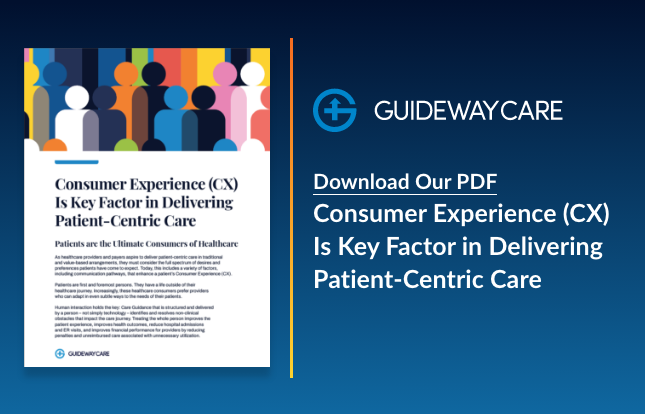6 Ways Care Guidance Resolves SDoH, Reduces Rehospitalization of At-Risk CVD Patients

February is American Heart Month, a time to focus on improved cardiovascular health and patient outcomes.
Social Determinants of Health (SDoH) experienced by cardiovascular disease (CVD) patients are underlying, contributing factors of health inequities that negatively affect care access, delivery, utilization, and potentially lead to poor outcomes including CVD-related morbidity and mortality. For providers within a health system, SDoH poise a higher potential for costly readmission and overutilization of clinical resources.
At-risk CVD patients require higher levels of support to address their whole spectrum of health and socioeconomic status. Nearly 60 percent of a patient’s risk is tied to social, environmental and behavioral factors outside the health system. This creates a need for support that serves as a clinical extension to proactively identify and resolve SDoH issues that go beyond a clinical provider’s visibility and ability to control.
A Care Guidance Solution
The American College of Cardiology/American Heart Association (AHA) guideline on the primary prevention of CVD recommends that clinicians evaluate SDoH on an individual basis to inform treatment decisions for CVD prevention efforts. To address this challenge, care guidance is helping health systems through an innovative patient-centric approach to patient activation.
Here are six ways Care Guidance supports CVD patients and clinicians:
- Improves post-discharge follow-up and patient compliance with treatment by proactively identifying and addressing the non-clinical issues and barriers that could lead to readmissions.
- Achieves remarkable results by resolving non-clinical factors. Clinical care is estimated to account for only 10-20 percent of the modifiable contributors to a patient’s well-being and healthy outcomes. The other 80 to 90 percent are considered non-clinical SDoH issues.
- Addresses the many elements of patient satisfaction that are determined outside the clinic. Notably, Care Guidance has proven to increase patient satisfaction ratings to the 90th percentile by addressing non-clinical factors that are beyond the scope of clinical care teams.
- Supports CVD patients and providers, taking additional steps to minimize high-risk patients’ chances of both an admission and readmission. This might mean involving the patient’s family in post-ambulatory care instructions, helping patients and caregivers understand post-acute instructions or referring the patient to a specialist for further care.
- Help lower readmission rates by ensuring that patients schedule a 7-day follow up with their primary care provider or coordinate transitional care that may include rehabilitative, restorative, or skilled care, physical therapy, nutritional counseling and dietary planning, fall prevention, and more. A recent study in JAMA found patients who followed this 7-day guideline had a 30-day readmission rate of 12.7%, while patients who waited longer or did not follow up with their physician had a readmission rate of 17.5%.
- Ensure patients understand their post-discharge care instructions. This level of personalized support goes beyond the distribution of printed instructions or hastily communicated instructions upon discharge. Care Guides recognize that patients misunderstand or forget parts of their post-care directions and help to minimize the risk of patients being readmitted to the hospital in the near future.
Guiding the Future of Equitable Healthcare
Guideway Care recognizes the importance of addressing SDoH. As a service as a solution, highly trained “care guides” operate within a scalable, technology-enabled platform to activate patients and uncover and resolve practical, non-clinical issues and barriers experienced during their care journey.
For heart failure and chronic obstructive pulmonary disease (COPD) patients, our care guidance program is proven to reduce hospital readmission:
- 31% reductions in congestive heart failure (CHF) hospital readmissions
- 41% reductions in COPD hospital readmissions
This includes:
- Practical barrier resolution
- Patient education
- Medication adherence
- Pulmonary rehab accountability
- Smoking cessation
- Dietary instruction
- Non-clinical interventions for several common comorbidities, including COPD, diabetes, high blood pressure and obesity
Contact us for more insight into how Guideway Care, as your partner, could implement an efficient and effective Care Guide solution to proactively resolve SDoH issues, and deliver on the promise of health equity based on the needs of the patient populations in your community.
Contact Us Today To Learn How We Can Help
"*" indicates required fields




